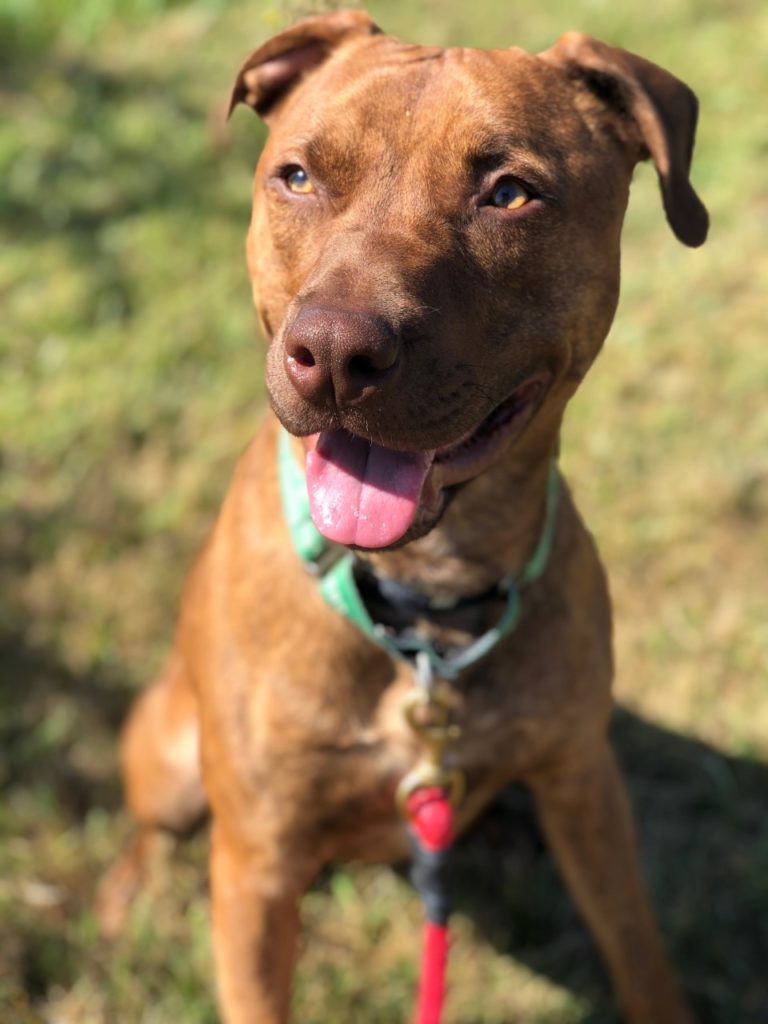Intro To Dog Training, The Positive Way!
By Lauren Rubin, KPA CTP, CPDT-KA, certified dog trainer
You CAN teach old dog new tricks! In fact, you can teach any dog any behavior they are physically capable of doing with positive reinforcement training. Everything from shake to rehabilitating aggressive dogs is possible. Positive reinforcement lets you take something your dog loves and use it to build strong behaviors while changing old habits.
The first step is finding what reinforces your dog’s behavior. A reinforcer is anything (toys, food, petting) that increases your dog’s desire to repeat a behavior. If you give your dog a treat for sitting, and your dog starts to sit more, then that treat is reinforcing. If your dog gets on the counter and finds a turkey sandwich, then starts counter surfing, that sandwich is reinforcing. If you ask your dog to lie down, and then say “good boy!” but your dog does not start laying down more, then praise is likely not reinforcing to that dog. Finding your dog’s favorite items is the first step to successfully training behaviors.
Once you find out what your dog loves, you can begin the training process. Positive reinforcement training is typically divided into two parts: management and training. When you are changing old habits, it’s important to note the training will only be effective with management in place.
Management
Dogs do what works. It’s really that simple. If your dog has an undesirable habit (such as counter surfing), ask yourself “what does my dog get out of this situation?” With counter surfing, it’s food. With barking at the door, it may be getting the scary person who rang the bell to go away. With peeing in the house, it’s the relief that comes with urinating. All of these things are reinforcing your dog for the wrong behaviors. In order to change these habits, you need to remove the reinforcement that goes with them.
It’s incorrect to say that positive trainers ignore bad behavior. This style of training isn’t permissive – it’s smart! Rather than setting your dog up for failure and then scaring or harming them to stop behavior, try preventing your dog from making the wrong choices. Then you can teach them an incompatible behavior. Once your dog understand what you want them to do, the management can go away because your dog no longer needs the old behavior to get what they want. Here are some examples:
- Your dog pees in the house: keep your dog tethered to you so you can supervise them, and set an alarm to take them outside every hour.
- Your dog barks at the doorbell: ask visitors to text you instead of ringing the bell to prevent your dog from barking.
- Your dog jumps on visitors: keep your dog behind a gate or door so they can’t reach guests.
Management is all about preventing the wrong behaviors. Think about what you want to change, and ask yourself “What could I put in place to stop my dog from being able to do this behavior?” Once you can stop the incorrect behavior, you can begin to train the right one.
Training
With management in place, you can begin training! Positive reinforcement means rewarding behavior that you like and want to see more of. The first step is to use something your dog loves (food, toys, physical affection) and give it to your dog immediately after you get the behavior you like. For example:
- Your dog pees outside: say “good dog!” and immediately give them a delicious treat.
- Ring your doorbell: before your dog can start barking, say “good dog!” and bounce a tennis ball for them.
- Visitors come over: keep your dog on leash and have guests drop treats at their feet as your dog approaches them. They can begin petting while your dog is eating the food with four feet on the floor.
The most important part of positive reinforcement is to notice the behavior you want to see again (sitting calmly, laying calmly, walking nicely) and reward it with something they love. Remember, if you don’t start to see your dog doing the behavior more often, then whatever you are using is not reinforcing enough. Some behaviors will require more nuanced and complex styles of training – cases of aggression, anxiety, and fearfulness should be reviewed by a certified trainer or veterinary behaviorist. If you need additional help, see Greenhill’s trainer referral list for great resources in the area!









